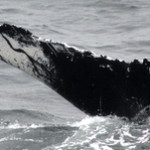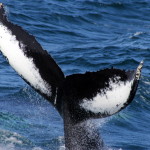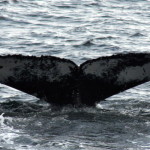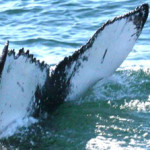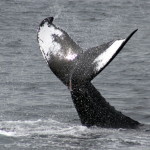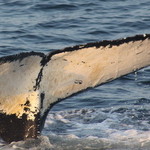Naturalist’s Notebook: July 18 to July 24
* Sightings on July 18 were not just limited to humpback whales. Numerous minke whales were also observed. Minkes are the smallest of the baleen whales common to our waters, reaching lengths of 25 to 30 feet (so still large compared to anything other than baleen whales).
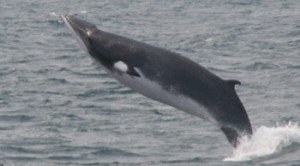
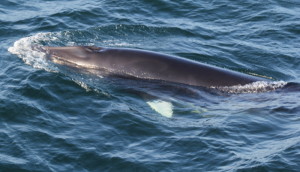
* In addition, there were at least 4 finback whales sighted today. They are, of course, the second largest animals to EVER have lived on earth. Sixty, seventy, even nearly ninety feet long, finbacks are long and streamlined. Built for speed. They can achieve and maintain speeds of as much as thirty knots.
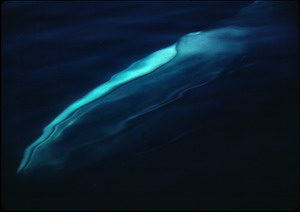
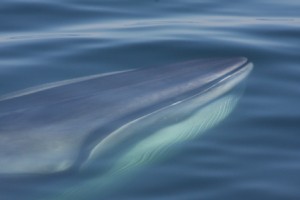
* Encounters were also had with large fish today, including an ocean sunfish (Mola mola) and a blue shark.
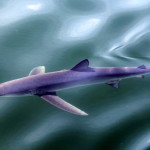
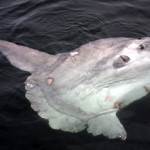
* And, of course, the two most common species of seal to our waters; harbor seals and gray seals.
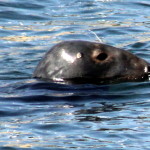
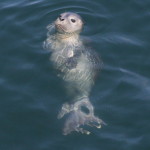
* So the lucky passengers that whalewatched today were treated to a broad picture of what this environment should look like.
* More finback and minke whales were sighted on July 19. The highlight of the day, however, were the encounters with a humpback whale named Reaper and her calf. Born over the last winter, between December and February, this is Reaper’s fifth calf since she was first sighted in 1987. The early portions of the day were spent travelling, Reaper and the calf and a female named Dyad, but, later in the afternoon, the adults began to feed, sometimes near the surface and other times a depth. The calf could be seen rolling over and blowing bubbles, mimicking its mothers’ actions.
* Even the finbacks were, at one point, getting in on the feeding.

* One of the finback whales sighted on July 20 was a whale named Ladders for the prominent prop scars on its side. Alas, this animal is not alone in having manmade markings. As many as forty percent of the animals in our study population show signs of being hit by vessels. Usually, prop injuries that are not fatal come from the props of smaller vessels.


* Of course, propellars are not the only things that cause scars on large whales. Scars are also caused by boat strikes.

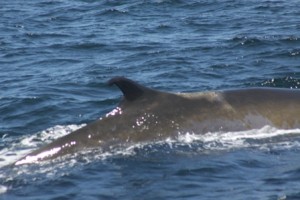
* And entanglements.
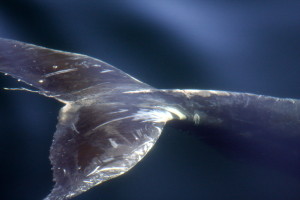



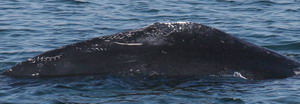
* July 21 saw the first breaches of the week. The lucky passengers of the Dolphin X were treated to numerous examples of what is likely the most energetically expensive behavior in the animal kingdom. Now, all species of whales can and do breach. It is, however, the humpback whale that is the best known for the behavior. And that was the animal that seemed to be trying to break the bonds of gravity.
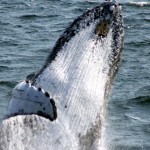
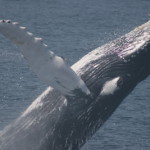
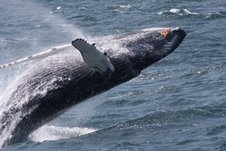
* Minke whales also breach.
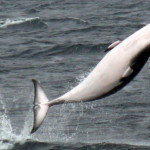
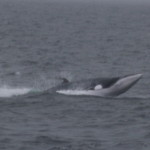
* Scylla has made her return to Stellwagen Bank. And at her side, her eleventh calf. It was the first boat out on July 22 that reported seeing the female we have been studying since the mid to late 1980’s. And the sunny, calm day was ideal for watching a calf.
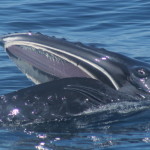
*At this point, the calf would still be drinking between fifty and seventy-five gallons of whale milk each day. Soon, however, Scylla will begin weaning her calf off of milk and onto a steady diet of small, schooling fish, like these sand eels.
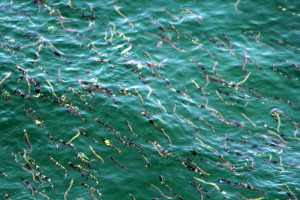
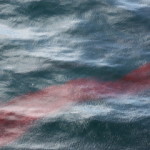
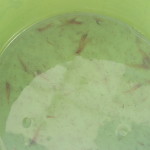
* Just imagine you are on a boat, five or six miles from shore, and suddenly there is this forty ton jumping high enough out of the water beside you to lift its head thirty-five feet above the surface. Now imagine it does it again. And again. And again. Now imagine that it rolls over and lifts its two very long, very flexible flippers out of the water and repeatedly slaps the surface with both of them. Imagine further that after about five or six minutes of this, the animal rolls back over, lifts its tail above the surface, and dives beneath the blue, only to start breaching once more. That was just the highlight of the 5:15 trip of the Dolphin X on July 23.
* These were just some of the individual humpback whales identified on July 24 . Do you recognize any of them? They are Nile, Eruption, Pele, Aerospace, Habenero, and Tear. In all, more than a dozen and a half humpback whales were seen today, including three mother and calf pairs (Nile, Perseid, and Milkweed. The calves seemed to spend the day “frolicing along the surface w/ spyhops, shaking, rolling and lobtailling. Very cute kids today.” Nancy Scaglione-Peck.
* And that’s how another incredibly successful week of whalewatching from Provincetown came to an end. The one really great thing about working in a natural environment is that there is no telling what could happen next week.






